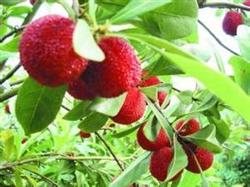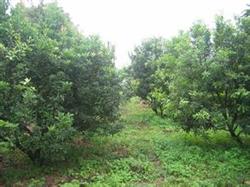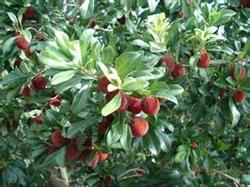Key points of Scientific Management of soil and Fertilizer in Waxberry Orchard

The yield of red bayberry mainly depends on the strength of plant growth and the size of tree crown. Therefore, orchard management should be strengthened, especially water and fertilizer management. 1. The growth of red bayberry planted on the hillside is often affected by soil erosion and bare roots at the tree head. therefore, using the inner slope to open ditches and cultivate soil at the tree head in time can not only store water and accumulate soil to prevent drought, but also help to prevent erosion by Rain Water, protect soil and fertilizer, and reduce soil and water loss. This is the first measure to promote the growth of red bayberry. 1.1 the girth method depends on the size of the plant, generally about 1 meter long and wide. First surround the canopy with straw, then dig a small trench outside the dripping line of the plant canopy, and fill the soil culture into the perimeter. The amount of soil cultivated depends on the size of the plant, and the thickness is generally no more than 7 cm to prevent rotting roots. 1.2 Young trees are harvested twice a year, once in the red bayberry harvest season and another around August, and adult fruit trees are carried out once a year after fruit harvest. two。 Rational fertilization red bayberry root has mycorrhizal, nitrogen fixation, generally does not need a large amount of nitrogen fertilizer, but potassium, phosphate fertilizer, especially potassium fertilizer. Therefore, farmers in the main producing areas use plant ash and burning soil with more potassium fertilizer as the main fertilizer of bayberry. Practice has proved that frequent application of plant ash or burning soil can not only ensure that the leaf color is thick green, but also promote plant growth, enrich bud eyes on branch tips, produce early and produce high yield, and improve fruit quality. The partial application of nitrogen fertilizer will lead to excessive vegetative growth and reduce yield, and excessive nitrogen fertilizer can lead to plant death. 2.1 Fertilizer amount take 10-year-old fruiting trees as an example, each tree uses 1012 kg of plant ash or 50 kg of burning soil, plus half a load of stable manure. Increase or decrease depending on the size of the fruit tree. 2.2 fertilization time is generally applied twice a year, from February to March and from July to August after fruit harvest, respectively.
- Prev

Red bayberry should be applied with high yield in spring and fertilizer in winter.
1. The water chestnut species of red bayberry is named because its fruit is purple and black when it is ripe. It is a famous variety in China, originally produced in Yuyao, and is the main variety of red bayberry in Yuyao City, so it is also called Yuyao Waxberry. At present, it has been extended to all parts of the province and various provinces in the south. Guizhou is called science and technology bayberry, Jiangxi is called hybrid bayberry, Yunnan is also known as big tree bayberry.
- Next

Control techniques of root rot of red bayberry
1. Cultivate the soil. Combine deep turn to carry on a tree plate fertilizer mud to press soil and cultivate soil, can use local material, use mountain topsoil, plant ash, river mud, pond mud and so on, generally every two years, each time can increase about 5 cm, in order to increase the plough layer of bayberry orchard, protect the root system, increase the extension range of root system, improve the root system of red bayberry.
Related
- Moge, come on! The staff of the peasant association in the producing area of cantaloupe were frightened when the crowd gathered.
- Causes and Solutions of low Fruit setting rate of Apple
- Symptoms and control measures of passion fruit virus disease
- Fruit growing lesson: how do apple orchards keep high yields?
- Can you build orchards in the mountains? What are the pros and cons?
- How to manage the coloring period of Crisson grape?
- This paper introduces the processing technology of two kinds of fig products.
- How much is a month for retired teachers in rural areas by 2020?
- How can strawberry planting increase sugar content? We should pay attention to management in many aspects.
- What are the cultivation techniques on how to improve the yield of golden fruit?

